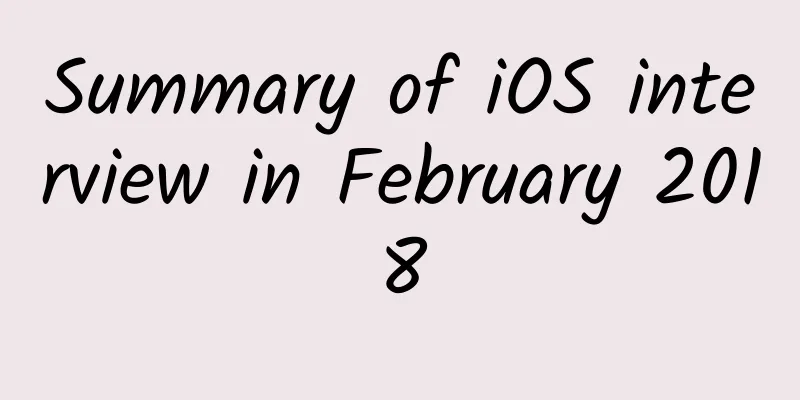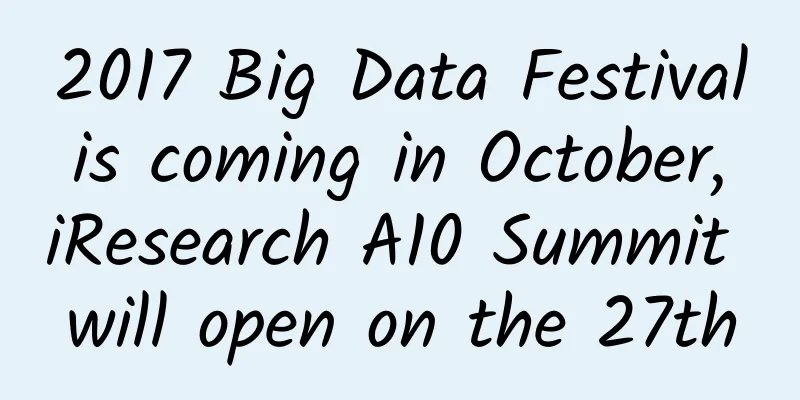Summary of iOS interview in February 2018

|
In mid-to-late February this year, I changed jobs for personal reasons. During this period, I interviewed 4 or 5 companies, most of which were round D or listed companies. I also saw some of my shortcomings from their interviews and written tests, so I want to write it down and share it with you. It would be great if it can help students who are currently interviewing. From the interview questions, you can actually see the development of some industries and the overall talent demand. 1. Written test questions There are basically one or two basic questions in the written test, such as the reuse mechanism of UITableView, the basic principle of ARC, how to avoid retain cycle, talk about the understanding of MVC, and the memory management mechanism of iOS. Everyone should be very clear about these. There are several types of written test content, including multiple-choice questions, essay questions, and the more difficult ones are multiple-choice questions. I interviewed a company that gave 10 multiple-choice questions. It was not okay to choose too many, too few, or wrong choices. I didn’t feel very good after finishing them. Some questions just asked which ones were correct, and then ABCD gave 4 different concepts in sequence. This kind of question is equivalent to testing 4 points. In short, don’t panic when you encounter such "disgusting" multiple-choice questions. You should be able to get a good score if you calm down and identify them one by one. Next, I will talk about a few questions that I didn’t answer very well at the time. I took note of them and would like to share them with you. 1. The difference and connection between processes and threads This is actually a question about the operating system. I was confused at the time, but later I thought about it carefully and answered it based on my own understanding. Here is a slightly more complete answer. You can prepare it so that you can give a perfect answer next time you are asked this kind of question. A process is a program with certain independent functions that runs on a certain data set. A process is an independent unit for resource allocation and scheduling in the system. A thread is an entity of a process and the basic unit for CPU scheduling and dispatching. It is a basic unit that is smaller than a process and can run independently. A thread itself basically does not own system resources, but only has some resources that are essential for operation (such as a program counter, a set of registers and a stack), but it can share all the resources owned by the process with other threads belonging to the same process. A thread can create and cancel another thread; multiple threads in the same process can execute concurrently. 2. The difference between parallelism and concurrency Concurrency means two or more events occur at the same time; Concurrency occurs when two or more events occur within the same time interval. 3. Talk about your understanding of Block and delegate I answered like this at the time: the delegate callback is more process-oriented, while the block is result-oriented. If you need to be notified of a multi-step process, you should use delegation. If you just want to get the information you requested (or an error message when getting the information), you should use a block. (If you combine the previous 3 conclusions, you will find that the delegate can maintain state in all events, while multiple independent blocks cannot) 4. Talk about the similarities and differences between instancetype and id a. Similarities Can be used as the return type of a method b. Differences ①instancetype can return an object of the same type as the class in which the method is located, while id can only return an object of an unknown type; ②instancetype can only be used as a return value, not as a parameter like id 5. Can declaration attributes be used in categories? Why? If so, how can it be implemented? When I asked this question, I felt that it could be done, but I didn't know how to do it. Later, I came back to check and found that it required the knowledge of Runtime. Adding attributes to a category Using Runtime to implement getter/setter methods
6. The difference between isKindOfClass and isMemberOfClass This question is simple, but I was nervous at the time, so don’t answer it the wrong way. isKindOfClass determines whether an object is a member of a class, or a member derived from that class. isMemberOfClass can only determine whether an object is a member of the current class 7. How to prevent retain cycles in blocks Use weak references to break retain cycles in blocks In MRC, _block will not cause retain; but in ARC, _block will cause retain. In ARC, _weak or __unsafe_unretained weak references should be used. 8. What are the implementation methods of iOS multithreading? What queues are there in GCD? Are they parallel or serial? There are three main multithreaded programming tools in iOS:
Dispatch queues are divided into the following three types: The system defaults to a serial queue main_queue and a parallel queue global_queue: There are several queue types in GCD: The main queue: has the same functionality as the main thread. In fact, tasks submitted to the main queue will be executed in the main thread. The main queue can be obtained by calling dispatch_get_main_queue(). Because the main queue is related to the main thread, it is a serial queue. Global queues: Global queues are concurrent queues and are shared by the entire process. There are three global queues in the process: high, medium (default), and low priority queues. You can call the dispatch_get_global_queue function to pass in the priority to access the queue. User queue: User queue (GCD does not call this queue, but there is no specific name to describe this queue, so we call it user queue) is created using the function dispatch_queue_create Created queues: These queues are serial. Because of this, they can be used to implement synchronization mechanisms, a bit like mutexes in traditional threads. 9. Talk about the difference between load and initialize When I asked this question, I was really confused. Although I use them a lot, I have never paid attention to the comparison between them. It seems that I should ask more questions when studying! 10.Is Core Data a database? What are the important classes? When I saw the question, I paid attention and felt that it was not common sense. I thought about it carefully and realized that Core Data is indeed not a database. It just maps tables and OC objects. It is not as simple as entering and mapping. The underlying layer still uses Sqlite3 for storage, so Core Data is not a database. There are 6 important classes: (1) NSManagedObjectContext (managed data context)
Function: insert data, query data, delete data (2) NSManagedObjectModel (managed data model)
Function: Add entity attributes and establish relationships between attributes How to do it: View editor, or code (3)NSPersistentStoreCoordinator (persistent storage assistant)
Function: Set the name, location, storage method, and storage time of the data storage (4)NSManagedObject (managed data record)
(5)NSFetchRequest (request to obtain data)
(6)NSEntityDescription(Entity structure)
The above are the questions I encountered in the interview in March that I didn’t answer all or didn’t answer well at once. If you know all of them, please ignore them. Then there are 2 open questions, which basically test your ability and the depth of your understanding. One is to talk about your understanding of Runtime, and the other is to talk about your understanding of Runloop. Since I don’t have a deep understanding of these two, I won’t post my understanding here. If you feel that you are lacking, go to the Internet and read more! 11. What should you pay attention to when using sprintf, strcpy, and memcpy? 2. Machine test This step basically only appears in large companies, or during the re-examination, because typing code on the computer can really quickly distinguish who is good and who is bad. Of course, I also interviewed with such a company, where they gave a blank paper and had to write code by hand throughout the process. This completely tests your basic skills, because there is no code completion, and no compiler to tell you where you are wrong, so everything depends on your basic skills. The computer test basically relies on algorithm questions. Of course, there are also algorithm questions in the last few questions of the written test, which depends on how the company arranges the interview. Two years ago, I also interviewed for iOS. At that time, the requirements for algorithms and data structures were very low, and many interviews basically did not ask these questions. This year, there were more these questions in the interview, which made me eyes light up. I also sighed at how fast technology has developed in the past two years. Interviews now involve algorithms. The path of programmers who don’t know algorithms and data structures will become narrower and narrower. The algorithm questions I encountered were not difficult. After all, it was not a company like BAT. The simple ones asked you to write an algorithm directly. The slightly more advanced ones required you to solve the problem after having a background. In fact, they were the same as ACM questions, but not that complicated. I will post a few paragraphs of the most frequently asked algorithms. For questions that were too difficult, you can only test your algorithm skills. Binary search θ(logn) Recursive Methods
Non-recursive method
Bubble sort θ(n^2)
Quick sort call method quickSort(a,0,n); θ(nlogn)
I have also written the notes. These algorithms can basically handle simple algorithm problems. For the data structure question, I encountered linked list reversal, implementing a stack structure, first-in, last-out, tree traversal, DFS and BFS of the graph. I won't post the code because it's too long. If you forget anything, you can go back and review it. 3. Interview The interview will basically ask you what projects you have done before, what problems you have encountered, how you solved them, what you think of XXX, etc. As long as you complete the projects seriously, the questions in the interview will be easier to answer, because they are all about your projects, which you know best. Well, this is the situation of recruiting iOS development engineers in Shanghai in February 2018, except for BAT companies. Compared with two years ago, the biggest experience is that the interviews are wider and the requirements are higher. Now, in addition to knowing OC, you must also understand algorithms and data structures, and either know ReactNative or a series of hybrid development frameworks such as PhoneGap, or be familiar with Swift. Programmers must keep up with the mainstream to avoid being eliminated by the times. Only in this way can they be competitive. This is also my feeling after interviewing these companies. You can learn as long as you live! Finally, I hope everyone can communicate with me. I am also an iOS rookie. Please give me more advice! |
<<: Tencent's top 10 open source projects for WeChat and mobile development
>>: A cheap iPhone X at half the price won't save Apple
Recommend
Facial recognition is so easy to fool, will my money be stolen?
AI face-changing used to only bother celebrities,...
Short video operation: How to play with batch matrix accounts of Volcano Short Video!
Huoshan Video is a short video platform under Tou...
With wolves in front and tigers behind, is there still hope for Sony mobile phones?
The current smartphone market structure is basica...
91 Ten Articles: Huawei said that software will be deeply involved in the entire life cycle of the car, and Meizu may start making cars
1. Meizu recently announced on Weibo that it will...
If you can't find a job after graduation, you are a failure? These 5 "dangerous misunderstandings" are quietly destroying young people's mental health
May 25th of each year is the National College Stu...
Sorry, I don't like programming, I like creating
I don't know if it's because people are r...
Insomnia, what is our body telling us?
Some people say that after the age of 30, you can...
Don’t want to drink water and get microplastics? The easiest way is actually… | Environmental Trumpet
Hello everyone, this is the 6th issue of the Envi...
The Douyin advertising platform was launched for the third time. This time, the commission was reduced from 60% to 30%!
After being delayed for more than a month, Douyin...
How to create Douyin video accounts in batches, how to edit videos and movies, how to monetize them with products (with software)
The famous Lanshen Media is said to be not a trai...
What happened to the 80% drop in real estate transaction volume? What was the real estate transaction volume in February?
Recently, CRIC Research Center released the Febru...
How many sparks will occur when HTML5 meets Native?
A few days ago, there was a piece of news that at...
24-hour emergency response | All four missing investigators in Ailao Mountain, Yunnan have died
Hot News TOP NEWS The four missing investigators ...
Top 10 advertising models during the epidemic
If we were to find a keyword to describe the livi...
When doing promotion, how can we achieve systematic thinking and rhythmic control?
This article will explain from the thinking level...









